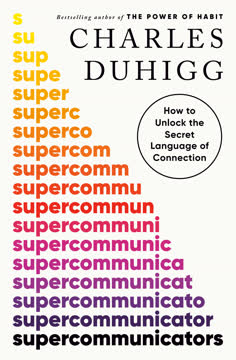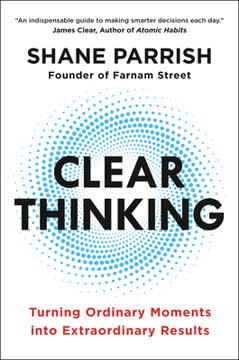重点摘要
1. 战略与执行密不可分;两者都涉及在不确定性下做出选择
战略关乎收入而非成本,完美是一个不可能的标准。
战略关乎选择。 传统观点认为战略制定和执行是两个独立的过程,这是错误的。实际上,两者都涉及在不确定性和竞争压力下做出决策。高管们应关注:
- 确定在哪里竞争以及如何取胜
- 认识到战略可以缩短成功的几率但不能保证成功
- 明确选择背后的逻辑,以便进行测试和改进
与其制定详细的计划,领导者应赋予整个组织的员工在明确的战略框架内做出一致选择的权力。这使得在条件变化时能够更快地适应。
2. 客户忠诚被高估了;应专注于创造累积优势
客户不会做出有意识的选择;他们会养成习惯。
建立习惯行为。 传统的忠诚计划往往失败,因为它们忽视了人们实际做出决策的方式。与其通过奖励来创造忠诚客户,公司应专注于:
- 成为最简单、最熟悉的选择
- 设计强化习惯的产品和体验
- 在品牌、包装和用户界面上保持一致性
目标是创造“累积优势”,每次互动都使未来的互动更有可能。这就是为什么像Tide洗衣粉这样的品类领导者在长期内保持主导市场份额,尽管产品差异最小。
3. 企业职能需要自己的战略来增加价值
企业职能也为客户服务:使用其服务的业务单元。
避免奴性战略。 许多公司将人力资源、IT和财务等企业职能视为仅仅支持业务单元的成本中心。这导致了无差异、被动的服务,无法创造价值。相反,职能部门应:
- 定义其主要客户和核心价值主张
- 确定哪些能力需要内部构建,哪些可以外包
- 开发衡量其对竞争优势影响的指标
通过明确战略,职能部门可以专注于高价值活动,吸引顶尖人才,并避免外包的威胁。它们成为战略伙伴而非订单执行者。
4. 将知识工作围绕项目组织,而非永久性工作
知识工作主要以项目形式出现,而非日常例行任务。
拥抱流动工作。 传统的工作结构假设工作是稳定且可预测的,但知识工作者面临工作量的大幅波动。为了提高生产力:
- 围绕有时间限制的项目而非永久性角色进行组织
- 创建一个可以灵活分配的资源池
- 开发匹配技能与项目需求的系统
这种方法被咨询公司和好莱坞工作室成功采用,减少了停工时间,使公司能够处理更多高价值的项目。它还为员工提供了在多个领域发展新技能的机会。
5. 文化变革需要改变个人的合作方式
你只能通过改变个人之间的合作方式来改变文化。
关注互动。 关于新价值观的宏大声明很少能改变文化。真正的转变通过对日常工作实践的小变化发生。领导者应:
- 重新设计会议结构和沟通规范
- 修改决策方式和资源分配方式
- 创造跨职能合作的机会
这些“微变化”逐渐改变指导行为的不成文规则。随着时间的推移,它们创造了关于“这里的做事方式”的新共同假设。
6. 通过想象力而不仅仅是数据分析来创造伟大的选择
创造伟大的选择需要想象力而不仅仅是数据。
平衡分析与创造力。 许多高管在做出战略选择时过度依赖数据和分析。虽然严格的分析很重要,但突破性的战略往往来自富有想象力的飞跃。为了产生新颖的选择:
- 使用定性研究发现未表达的客户需求
- 应用其他行业或领域的类比
- 创造关于未来可能性的引人入胜的叙述
目标是扩展选择集,超越现状的渐进改进。然后可以使用数据来测试和改进最有前途的想法。
7. 干预设计与创新本身同样重要
干预设计与创新本身同样重要。
计划采用。 许多潜在的变革性创新失败了,因为没有足够关注它们将如何引入和整合。成功的干预设计包括:
- 绘制关键利益相关者及其利益
- 对实施方法进行原型设计和迭代
- 创造建立支持和克服阻力的叙述
通过像对待创新本身一样仔细对待推广,公司增加了其想法被接受并产生持久影响的几率。
8. 在并购中,给予价值才能获得价值
你需要给予价值才能获得价值。
专注于增强竞争力。 大多数收购失败是因为买家专注于从目标公司获得什么,而不是他们能贡献什么。成功的收购者:
- 确定他们可以使目标公司更具竞争力的具体方式
- 避免基于乐观预测的过度支付
- 投资于整合以快速实现协同效应
目标应是创建一个比任何一家公司单独更强的组合实体。这需要对每一方的优势有清晰的理解,并如何利用这些优势创造新的价值来源。
最后更新日期:
FAQ
What's "A New Way To Think" about?
- Author and Purpose: "A New Way To Think" by Roger L. Martin is a guide to improving management effectiveness by challenging traditional business models and introducing new ways of thinking.
- Core Concept: The book argues that many existing management models are flawed and persist despite their ineffectiveness, and it offers alternative models that promise better outcomes.
- Structure: The book is divided into four parts, each focusing on different aspects of management: context, making choices, structuring work, and key activities.
- Target Audience: It is aimed at executives, managers, and anyone interested in enhancing their strategic thinking and management practices.
Why should I read "A New Way To Think"?
- Challenge Existing Models: The book encourages readers to question and rethink established management models that may not be delivering desired results.
- Practical Frameworks: It provides practical frameworks and alternative models that can be applied to real-world business challenges.
- Expert Insights: Written by a renowned management thinker, the book offers insights from Roger L. Martin's extensive experience advising top companies.
- Broad Applicability: The concepts are applicable across various industries and organizational levels, making it a valuable resource for a wide audience.
What are the key takeaways of "A New Way To Think"?
- Rethink Management Models: Many traditional management models are outdated and need to be replaced with more effective alternatives.
- Focus on Human Value: New ways of thinking should prioritize human value over organizational structures.
- Strategy and Execution: Strategy and execution are not separate; they are intertwined and should be treated as such.
- Customer-Centric Approach: To create shareholder value, businesses should focus on putting customers first.
What are the best quotes from "A New Way To Think" and what do they mean?
- Tom Peters on the Book: "I would pay 10 or 110 times the cover price for just the table of contents of this extraordinary book." This highlights the book's value in providing actionable insights.
- Julia Hartz on Simplification: "Roger Martin has an undeniable gift for simplifying the complex and nuanced scenarios of management." This emphasizes the book's ability to distill complex management issues into understandable concepts.
- Zhang Ruimin on Human Value: "New ways of thinking must shift from centering around the organization to centering around human value." This quote underscores the book's focus on prioritizing human-centric approaches in management.
How does Roger L. Martin suggest we rethink competition in "A New Way To Think"?
- Frontline Focus: Martin argues that competition happens at the front line, not at the head office, emphasizing the importance of customer interactions.
- Value Maximization: The book suggests that every corporate level should help the level below it to serve customers better, maximizing value at the front lines.
- Organizational Structure: It challenges traditional hierarchical structures, advocating for a more customer-centric approach that empowers frontline employees.
- Net Value Addition: Each organizational layer should add more value than it costs, ensuring competitiveness at the front line.
What does "A New Way To Think" say about stakeholder value?
- Customer First: The book argues that to create shareholder value, businesses should prioritize customers over shareholders.
- Long-Term Focus: It suggests that focusing on customer satisfaction leads to long-term shareholder value, as demonstrated by companies like Johnson & Johnson and Procter & Gamble.
- Compensation and Culture: The book discusses how compensation structures and corporate culture should align with a customer-first approach.
- Critique of Shareholder Primacy: It critiques the traditional focus on maximizing shareholder value, highlighting its limitations and potential for short-termism.
How does "A New Way To Think" address customer decision-making?
- Habit Over Loyalty: The book posits that customer decisions are often driven by habit rather than conscious loyalty, emphasizing the power of cumulative advantage.
- Ease of Choice: It suggests that offering customers the easiest choice, rather than the perfect one, can lead to sustained competitive advantage.
- Innovation and Familiarity: While innovation is important, maintaining familiarity and ease of use is crucial for customer retention.
- Behavioral Insights: The book draws on behavioral psychology to explain how processing fluency and repeated experiences influence customer preferences.
What is the "possibilities-based approach" in "A New Way To Think"?
- Strategic Possibilities: The approach involves generating multiple strategic possibilities and assessing what would have to be true for each to succeed.
- Testing and Choice: It emphasizes testing the conditions for success and making informed choices based on feasibility and potential outcomes.
- Collaborative Process: The approach encourages collaboration and input from diverse team members to generate creative and viable strategic options.
- Focus on Conditions: Instead of focusing on what is true, it asks what would have to be true, shifting the focus to potential and opportunity.
How does "A New Way To Think" redefine the role of data in decision-making?
- Imagination Over Data: The book argues that creating great choices requires imagination more than data, challenging the over-reliance on data-driven decisions.
- Possibility vs. Necessity: It distinguishes between situations dominated by possibility (changeable) and necessity (unchangeable), advocating for a design and imagination-driven approach in the former.
- Breaking the Frame: The book encourages breaking conventional frames and exploring new narratives to drive innovation and strategic thinking.
- Prototyping and Testing: It highlights the importance of prototyping and testing new ideas to create data and insights for decision-making.
What does "A New Way To Think" suggest about changing organizational culture?
- Indirect Change: The book emphasizes that culture can only be changed by altering how individuals work with each other, not by direct mandates.
- Interpersonal Mechanisms: It highlights the role of interpersonal interactions in aligning cultural and formal mechanisms within an organization.
- Microinterventions: Small changes in how meetings are structured and conversations are framed can lead to significant cultural shifts.
- Case Study: The book provides examples, such as the cultural transformation at the Rotman School of Management, to illustrate successful culture change.
How does "A New Way To Think" propose organizing knowledge work?
- Project-Based Organization: The book advocates for organizing knowledge work around projects rather than permanent jobs to improve productivity and flexibility.
- Flow-to-Work Model: It suggests a flow-to-work model where knowledge workers are assigned to projects based on demand, reducing downtime and inefficiencies.
- Knowledge Codification: The book emphasizes the importance of codifying knowledge to advance from heuristics to algorithms, enhancing knowledge transfer and productivity.
- Professional Services Model: It draws parallels with professional services firms, which successfully manage knowledge work through project-based structures.
What is the book's perspective on mergers and acquisitions (M&A)?
- Value Exchange: The book argues that successful M&A requires giving value to get value, focusing on what the acquirer can offer the target.
- Four Ways to Enhance Value: It outlines four ways to enhance an acquisition's competitiveness: smarter growth capital, better managerial oversight, skill transfer, and capability sharing.
- Avoiding the Take Mode: The book warns against acquisitions driven by a desire to enter attractive markets without understanding or enhancing the target's value.
- Perverse Incentives: It discusses the perverse incentives that drive M&A activity, such as stock-based compensation and accounting standards, leading to value-destroying deals.
评论
一种新的思维方式挑战了传统的商业模式,提供了关于战略、人才管理和组织结构的新视角。读者欣赏马丁的见解,但也指出有些观点并非完全新颖。该书的格式由HBR文章汇编而成,反应不一。有些人觉得内容不连贯,而另一些人则重视其实用的框架和发人深省的概念。特别受到赞誉的是关于战略、并购和人才管理的部分。该书被认为对大公司中的高管和顾问最为相关,尽管企业家们也从中发现了其企业洞察的价值。
Similar Books

















